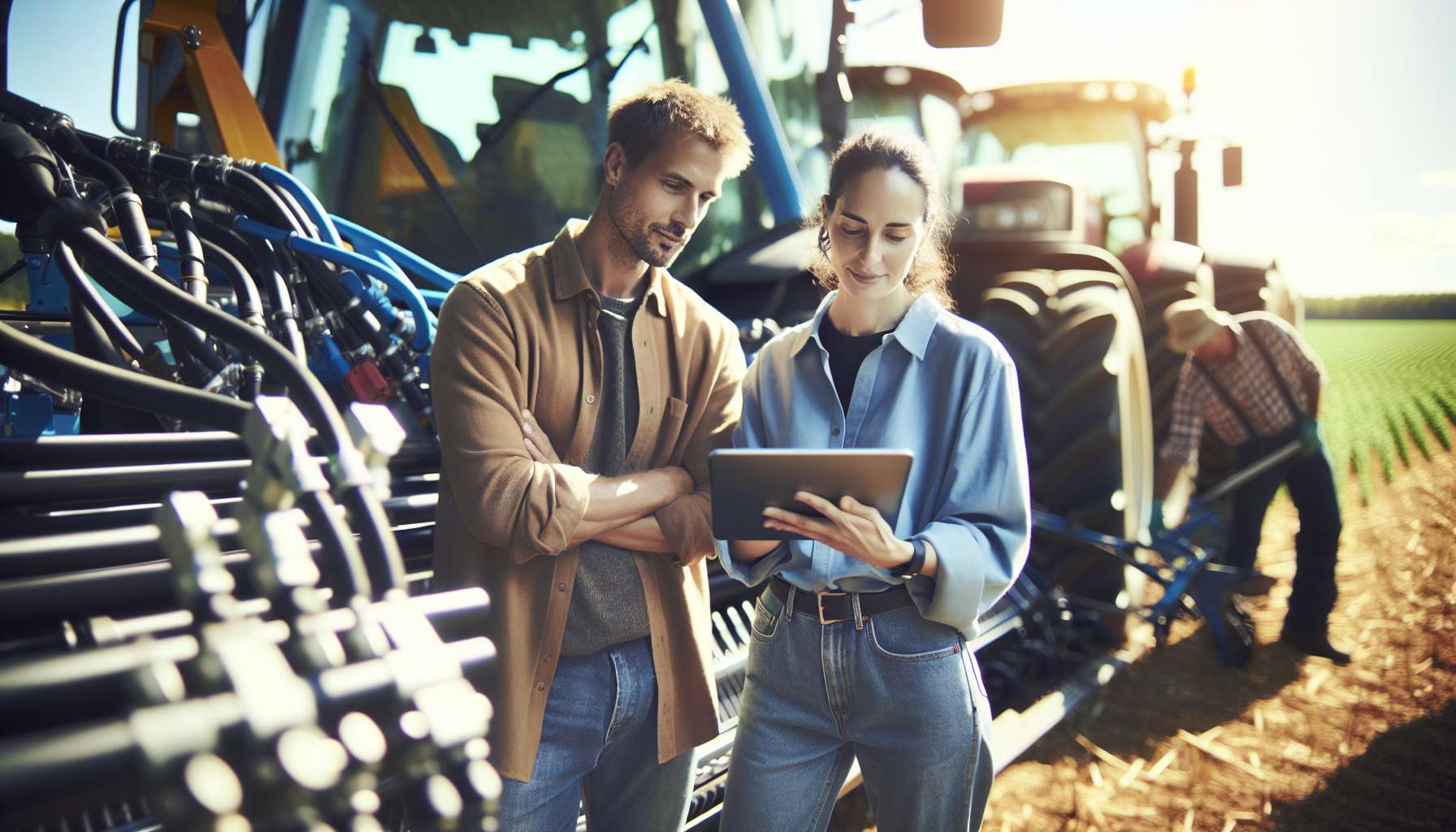The Power of Augmented Reality in Agriculture Equipment Demonstrations
As technology continues to advance, industries across the board are finding innovative ways to leverage its power. One such industry that has embraced the potential of augmented reality (AR) is agriculture. AR has proven to be a game-changer in equipment demonstrations, revolutionizing the way farmers and agribusinesses make informed decisions about their machinery investments. In this article, we will explore the role of AR in agriculture technology and how it is transforming equipment demos.
What is Augmented Reality?
Before diving into the specifics of AR in agriculture, let’s briefly explain what augmented reality is. AR is a technology that overlays digital information, such as images, videos, or 3D models, onto the real world. By using a smartphone, tablet, or specialized AR glasses, users can see virtual objects integrated into their physical environment in real-time.
The Benefits of AR in Agriculture Equipment Demonstrations
Traditionally, equipment demonstrations in agriculture involved physical visits to dealerships or trade shows, where farmers could see the machinery up close and personal. While this approach still has its merits, AR takes equipment demos to a whole new level. Here are some of the key benefits:
- Accessibility: With AR, farmers can experience equipment demonstrations from the comfort of their own farms. They no longer need to travel long distances or wait for specific events to see the latest machinery in action.
- Realistic Visualization: AR allows farmers to visualize equipment in their actual working environment. They can see how the machinery fits into their fields, barns, or storage facilities, providing a more accurate representation of its potential impact.
- Interactive Learning: AR enables users to interact with virtual models, exploring different features and functionalities. Farmers can get a hands-on experience without the need for physical equipment, helping them make more informed decisions.
- Time and Cost Savings: By eliminating the need for physical visits, AR saves farmers valuable time and money. They can quickly compare different equipment options and narrow down their choices without leaving their farms.
Real-World Examples
AR in agriculture equipment demonstrations is not just a theoretical concept; it is already being implemented by forward-thinking companies. Here are a few real-world examples:
- John Deere: The renowned agricultural machinery manufacturer has developed an AR app that allows farmers to visualize their tractors and combines in 3D. Users can explore the machines from all angles, view specifications, and even simulate their operation.
- Claas: Another industry leader, Claas, has integrated AR into their product catalogs. Farmers can use their smartphones or tablets to scan product pages and instantly see 3D models of the machinery, providing a more immersive and engaging experience.
- Startups: Numerous startups are also entering the AR agriculture space, offering solutions for equipment demos and beyond. These companies are leveraging AR to enhance precision agriculture, crop monitoring, and even livestock management.
The Future of AR in Agriculture
The potential of AR in agriculture goes far beyond equipment demonstrations. As the technology continues to evolve, we can expect to see even more exciting applications. Imagine farmers using AR glasses to receive real-time data about their crops, such as nutrient levels, pest infestations, or irrigation needs. This level of information can significantly improve decision-making and ultimately lead to higher yields and more sustainable farming practices.
Furthermore, AR can facilitate knowledge transfer within the agricultural community. Farmers can share their expertise and experiences through AR platforms, creating a collaborative environment where best practices are easily accessible to all.
Conclusion
Augmented reality is transforming the way agriculture equipment demonstrations are conducted. With its accessibility, realistic visualization, interactive learning, and time and cost savings, AR is revolutionizing the decision-making process for farmers and agribusinesses. Real-world examples from industry leaders and startups demonstrate the tangible benefits of AR in agriculture. As the technology continues to advance, we can look forward to a future where AR plays an even more significant role in improving farming practices and driving sustainable agriculture.





